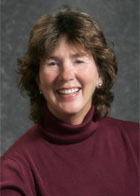By Andrew Cohen
The increase of low-wage earners and the barriers to workplace equality took center stage at the Thelton E. Henderson Center for Social Justice’s recent fall symposium.

“Almost 50 years after the Civil Rights Act was enacted, the stratification of America’s workplace by race, class, and gender still persists,” said center Faculty Director Mary Louise Frampton. “People doing some of our society’s most important work are making small change. It’s time to confront the myth of the American dream that hard work leads to financial security.”
Between 1948 and 1973, U.S. worker productivity and compensation grew almost identically. But while productivity has risen sharply over the past few decades, compensation has not kept pace; the gap for the average worker is wider than at any point since World War II.
“We need to step back, look at what we’ve been trying, and broaden that lens,” said Henderson Center Executive Director Dimple Abichandani. “That’s why we asked our participants to push the boundaries to spark new thinking and new solutions.”
The symposium convened lawyers, policy makers, scholars, union organizers, and non-profit leaders. Citing globalization, the decline of unions, and funding cuts to civil rights enforcement as factors expanding the gap between productivity and wages, panelists called for a versatile approach to workplace inequality that includes legislation, litigation, and advocacy.
“We have to question the prevailing strategy of training, education, and entrepreneurship as the path to success,” said Steven Pitts of UC Berkeley’s Center for Labor Research and Education. “It’s time to change those structures. Problems of low-wage work are downplayed too often, as are the enduring racial inequities in the labor market and the lack of power to address them.”
Pitts noted that African Americans make up 55 percent of those living in poverty in the United States and their unemployment rate is double that of whites.
Food for thought
The restaurant industry was presented as a symbol of workplace inequality. Saru Jayaraman, co-founder of a non-profit organization called Restaurant Opportunities Centers (ROC) United, explained how “the skin color gets darker the farther back you go” in most restaurants.
“When the list of the 10 lowest-paying jobs comes out every year, restaurant-related jobs take up six or seven of them,” Jayaraman said. “Servers are almost never people of color. And while servers in some New York restaurants can earn $150,000 a year, bussers earn $20,000 to $30,000.”
With less than 0.1 percent unionization in the industry, ROC United has grown to more than 11,000 members. The group fights to increase the $2.13 minimum wage for tipped workers, improve working conditions, and establish fair promotion practices.
It recently conducted a national experiment where 200 pairs of people—one white person and one of color—sought server positions in the same restaurants. The result: whites were twice as likely get a job offer.
Minsu Longiaru of Michigan’s ROC United office said society ought to be “as concerned about the people working in these conditions as it is about whether the chicken is free-range.”
Seeking systemic change
Rachel Spector, a clinical teaching fellow at Fordham University, urged participants to assess “what litigation can get us and what it can’t.” In the restaurant realm, her ideas included establishing a credential requirement to become a bartender or server, and incentives for restaurant owners to implement fair promotion policies.
When litigation is needed, panelists William Kennedy and Sonia Chopra agreed that decreasing racial bias within all areas of legal practice will help increase justice for aggrieved low-wage workers. Chopra, a lawyer with National Jury Project Litigation Consulting, explained how such bias influences summary judgment decisions, jury selection, and post-trial rulings.
“For attorneys, it affects what cases you take and value, how you pick jurors, and how you prepare witnesses,” she said. Chopra called for increasing the diversity of the bench and the bar to mitigate the role of race on legal decision making.
“A high percentage of judges say they’re in the top quartile of not being biased, which of course is mathematically impossible,” she said. “We found that the more objective that judges think they are, the less it’s actually true. We need more judicial training and jury orientation on racial bias.”
